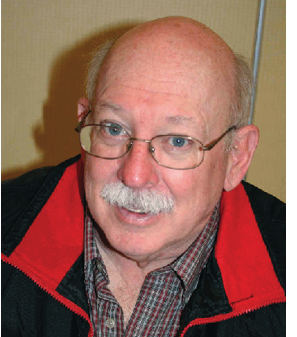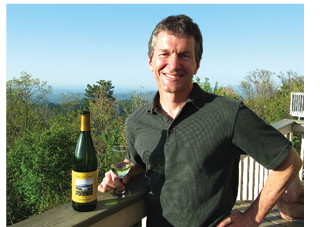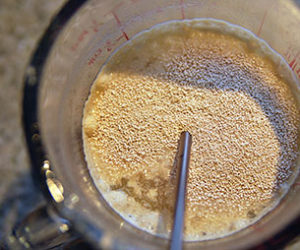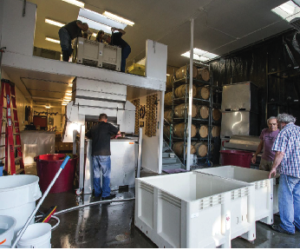To make good wine one must understand what good wine is and, alternatively, understand and be able to detect wine faults. Anyone can learn to evaluate wine, and as a winemaker it is critical to be able to identify wine faults. If you want to learn where to begin, taking tips from these pros is a great place to start!
 Joe Dautlick is a graduate of the American Wine Society (AWS) Judge Training Program and is now an instructor as well as the Director of Competitions for the AWS. His interest in wine began as he tasted at wineries in Europe where he worked for four years. Later he volunteered in a Pennsylvania vineyard, where he had hands-on experience in every stage of wine production from pruning to final blending. Joe annually organizes many amateur winemaker competitions and judges in numerous amateur and commercial competitions, including the WineMaker International Amateur Wine Competition.
Joe Dautlick is a graduate of the American Wine Society (AWS) Judge Training Program and is now an instructor as well as the Director of Competitions for the AWS. His interest in wine began as he tasted at wineries in Europe where he worked for four years. Later he volunteered in a Pennsylvania vineyard, where he had hands-on experience in every stage of wine production from pruning to final blending. Joe annually organizes many amateur winemaker competitions and judges in numerous amateur and commercial competitions, including the WineMaker International Amateur Wine Competition.
To evaluate wine, I follow the five “S” steps — see, swirl, smell, sip and then spit or savor.
You can tell a lot about a wine in the color. If there are brownish tints then it could be oxidized. If it’s cloudy you may have bacterial contamination, or it may not have aged and racked enough. One of the interesting things I often find at the WineMaker International Amateur Wine Competition is cloudiness in the meads because the meadmakers are anxious to get them into competition early, but meads need to age at least a year to clarify. That’s a time problem, but more often cloudiness in wine is a bacterial indicator.
Then you swirl the wine and smell it. I find that I can probably pick up 2⁄3 to 3⁄4 of my evaluation in wine quality by its aroma. I cringe every time I pour wine for someone to taste and they gulp straight away. You lose a whole lot of the ability to evaluate a wine and its characteristics if you don’t smell it to begin with. There are a huge number of characteristics to look for when you smell a wine, such as fruits, spices, yeast, oak, vanilla, sulfur, alcohol, and so on. You’re looking for the aroma that’s going to come from the grape itself and the bouquet that comes from the winemaking process.
The next step is taste. You get so much from the aroma, but what you get from the taste is sweetness (from sugar), sour (from acids), bitterness (from tannins) and saltiness (not in wines).
Then you assess aftertaste. If the fruit taste lasts less than 15 seconds it’s mediocre. If the fruit and acid stay there in balance and you can savor it for up to a minute then it’s a really good wine.
I think most amateur winemakers are not sensitive enough to faults in wine. The most common faults I see are oxidation, sulfur, volatile acidity, and wines that are not balanced. Average wine tasters may recognize a wine isn’t quite right when it possesses one of these faults, but they can’t specifically identify what is wrong. The American Wine Society trains people to use the evaluation process that I described and then to learn about these other fault characteristics and how to identify them. If you don’t want to take a class, there are companies that produce wine fault kits. You buy the kit, put a couple drops of one of the various faults in a wine and compare the wine with the fault to one without it. Without the ability to recognize the fault, you have no chance of being able to correct it.
I have found that the biggest improvement an amateur winemaker can make is to bring science into their winemaking — get test kits and equipment to measure the pH, titratable acidity, sugar and sulfur content.
In addition to evaluating your own wine, it’s always good to have friends or judges do so too, but you need to have friends who can be honest with you. It’s also important to get many opinions. Even if a wine scores low in one competition, you should not be put off. I would encourage everyone to send their wine to more than one competition and seek those that return detailed judge comment sheets on each wine. A different set of judges may provide additional insight. With both trained and untrained judges, individual experience and personal bias may feed into their evaluations, so the more feedback the better.
 Scott Prom is the Winemaker and a Partner at Shelburne Vineyard in Shelburne, Vermont. Scott’s interest in wine started in 1985 through a beer and winemaking club in Seattle. After moving to Vermont with his family in 1996, Scott began experiencing winemaking withdrawal. In 1998 he met Ken Albert, which was the start of the relationship that has resulted in Shelburne Vineyard. Scott often participates as a wine judge in events, including the WineMaker International Amateur Wine Competition.
Scott Prom is the Winemaker and a Partner at Shelburne Vineyard in Shelburne, Vermont. Scott’s interest in wine started in 1985 through a beer and winemaking club in Seattle. After moving to Vermont with his family in 1996, Scott began experiencing winemaking withdrawal. In 1998 he met Ken Albert, which was the start of the relationship that has resulted in Shelburne Vineyard. Scott often participates as a wine judge in events, including the WineMaker International Amateur Wine Competition.
Wine evaluating can be done by anyone. All you need are a few tips on the process and what to look for, and knowing there are no right or wrong answers. While everybody’s palate may be slightly different, what you taste is what you taste. Thinking about a wine and putting words to what you taste is the best way to mature your palate and advance your wine tasting experience.
Evaluation is important to keep yourself calibrated and honest. To do a true evaluation, you need to know what the most common flaws are, get your palate trained to identify these flaws, and be honest with yourself. Starting with a properly shaped wine glass (tapered, closed top) one quarter full, I hold the wine to a light background and look for color and clarity, both of which can tell a lot about the age of the wine and how it was processed. Then I swirl to release the aromatics and put my nose on the side of the glass opening where the aromatics are trying to escape. Now on to the
tasting. Usually I slurp — it’s okay, really — slurping releases hidden flavors from the wine. Then I let the finish unfold. Well-made wines will evolve with pleasant balanced flavors unfolding inside your mouth.
Under normal conditions, you should be able to complete a wine evaluation in a couple minutes. The two most common flaws I see by amateurs are over-oxidation and excess SO2. Oxidation can be prevented by keeping your wine containers topped up at all times, especially post-fermentation when you must become fanatical about minimizing the exposure to air. Excessive SO2 can be eliminated by being very meticulous about your measurement and calculation techniques.

 Scott Prom is the Winemaker and a Partner at Shelburne Vineyard in Shelburne, Vermont. Scott’s interest in wine started in 1985 through a beer and winemaking club in Seattle. After moving to Vermont with his family in 1996, Scott began experiencing winemaking withdrawal. In 1998 he met Ken Albert, which was the start of the relationship that has resulted in Shelburne Vineyard. Scott often participates as a wine judge in events, including the WineMaker International Amateur Wine Competition.
Scott Prom is the Winemaker and a Partner at Shelburne Vineyard in Shelburne, Vermont. Scott’s interest in wine started in 1985 through a beer and winemaking club in Seattle. After moving to Vermont with his family in 1996, Scott began experiencing winemaking withdrawal. In 1998 he met Ken Albert, which was the start of the relationship that has resulted in Shelburne Vineyard. Scott often participates as a wine judge in events, including the WineMaker International Amateur Wine Competition.




